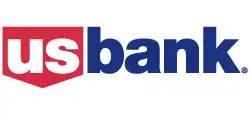PLOCs can be intimidating. They aren’t as common, so you might not know exactly how they work. In addition, each lender has a different way of handling your PLOC. Here’s what you need to know.
May only let you borrow for a certain period of time
Generally, PLOCs work in three different ways, as shown in the table below. Continuous draw periods are probably the most common.
But before we get started, you need to know two definitions.
- Draw period: This is when you can use your line of credit. You’ll also make minimum monthly payments which will go up and down, depending on how much you charged and your interest rate.
- Repayment period: When you hit your repayment period, you can no longer use your line of credit. Instead, this is the time you’ll pay back your outstanding balance.
| Type of PLOC | How it works |
| Continuous draw period | Borrow anytime, as long as you have the credit available and your lender hasn’t closed your line of credit |
| Draw period and repayment period | Borrow and make minimum monthly payments during your draw period; pay your outstanding balance during your repayment period |
| Simultaneous repayment period | Borrow and repay at the same time; outstanding balance is due at the end of your PLOC (called maturity) |
You usually need good credit to qualify for a PLOC
You could get a PLOC with bad credit, but traditional banks and credit unions require a 670 FICO score (though often higher).
If you have bad credit and want a PLOC, you’ll probably have to look online. Still, bad credit PLOCs often come with high rates and fees. NetCredit, for example, charges a 10% fee every time you use your line — that’s $100 out of every $1,000 you borrow.
PLOCs usually have variable interest rates
Most personal lines of credit have variable interest rates. Variable interest rates are guided by the Wall Street Journal prime rate, so they go up and down while your line is open.
The Wall Street Journal prime rate (also called the U.S. prime rate) is the average interest rate that most lenders charge their most creditworthy customers.The prime rate tends to fluctuate based on the Federal Reserve rate, though not always.
You might see a PLOC rate advertised as prime, plus the lender’s rate. It can look confusing — here’s how to decipher it.
Imagine a lender is offering Prime + 4.00% to Prime + 22.50%. First, find the Wall Street Journal prime rate. Then, take that number and add it to 4.00% and 22.50%.
At the time of this writing, Prime is 7.50%. So in this example, the lender’s current PLOC rates are 11.50% – 30.00%.
PLOCs can come with a lot of fees
Compared to other types of financing, personal lines are heavy on fees. Your personal line of credit could have fees like:
- Application fees. These aren’t common and can be a sign of predatory lending.
- Origination fees. When you open your line of credit, your lender could charge a percentage of your line as an origination fee.
- Annual or monthly fees. You may need to pay a maintenance fee every year or month that your line of credit is open.
- Late payment fees. Budget for a possible fee if you pay late.
- Over limit fees. If you charge past your credit limit, that could be another fee.
- Cash equivalent fees. Some lenders charge when you use your PLOC card to pay for things directly (as opposed to doing an online transfer into your checking account).
- Cash advance ATM fees. You might be able to tap your PLOC using an ATM, but it will probably come with a fee.
- Foreign transaction fees. These can apply on foreign purchases or if you use an ATM overseas to get foreign currency.









